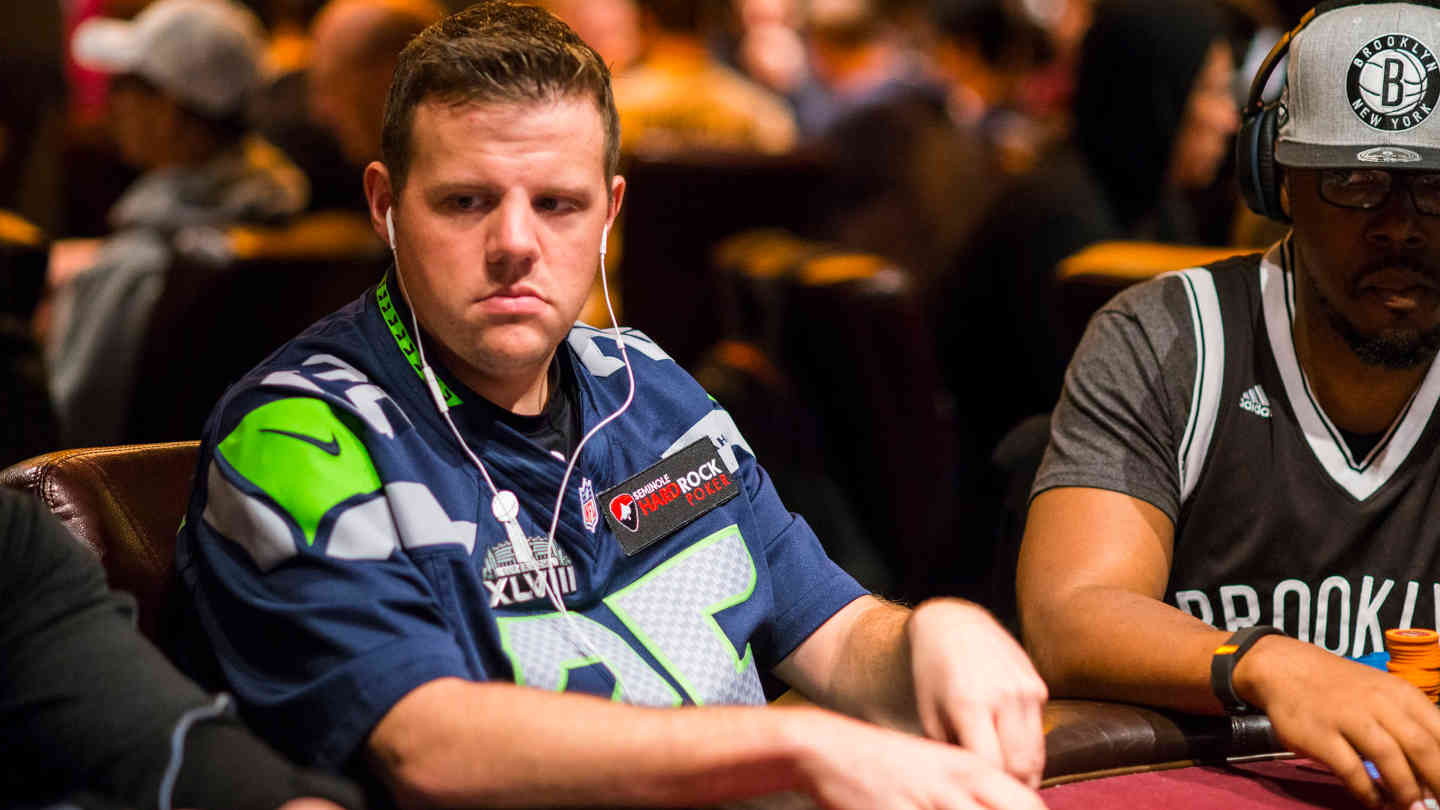PFR & VPIP Poker Stats: How to Get The Most Out of It
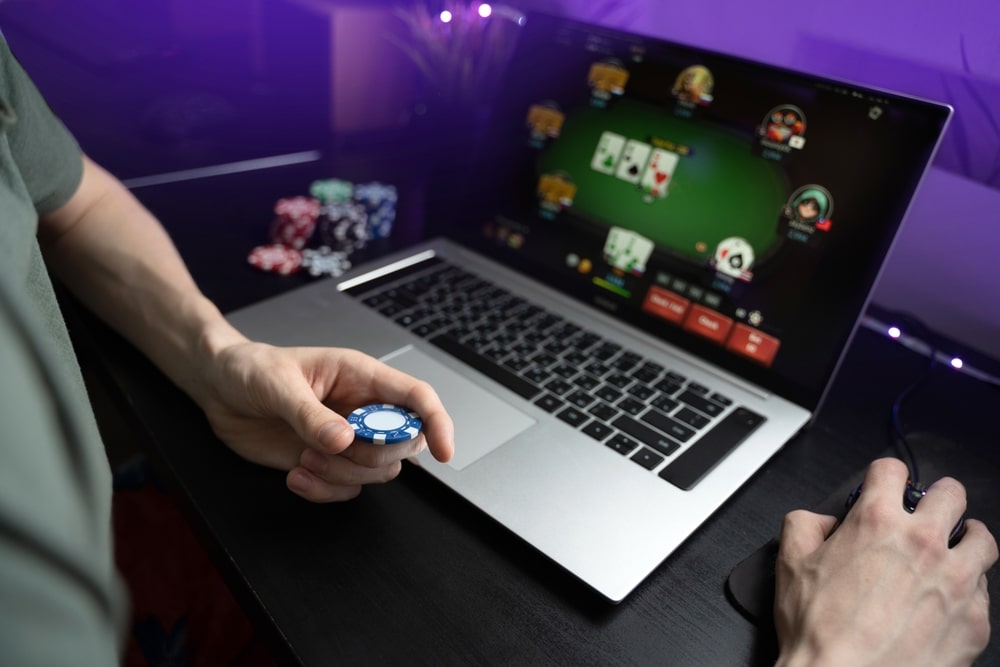
10 minutes
Last Updated: March 19, 2024
If you want to stay competitive in modern-day online poker, using tracking software is a must. Being able to see stats on your opponents can tell you a lot about what type of a player they are and what strategies are most likely to work against them.
However, there are so many different numbers, stats, and percentages that you might feel overwhelmed before even learning the basics.
The good news is, you don’t have to learn everything at once, and even a basic understanding of VPIP poker stats and PFR implications will make you a better player.
Knowing these numbers can be a huge help at the tables, especially when you’re up against inexperienced opponents.
PFR & VPIP Poker Stats in a Nutshell
Let’s start at the top by explaining what these stats mean and how they’re tracked. Once you understand this, you’ll have a much better idea of how and why these numbers can have a very practical application during your sessions.
VPIP – Voluntarily Put Money ($) In Pot
As you could extrapolate from the name, the VPIP poker stat explains how often a player has entered pots without being forced to (i.e., when not in the blinds). Every time you put money into the pot, whether raising first in, calling a raise or just limping in, your VPIP goes up.
For example, let’s say you play 100 hands during a session, and you voluntarily decide to get involved in 40 of those. Over this sample of 100 hands, your VPIP would be 40%.
This is just an example to explain how this stat works while I’ll discuss the VPIP meaning a bit later in the text.
PFR – Preflop Raise
The PFR poker stat shows how often a player comes into the pot with a raise. This number is more refined than VPIP, as it tells you more about how aggressive a particular opponent is. These two, VPIP and PFR poker stats, are usually displayed together.
Taking the above example, if you were to enter 40 hands out of 100 and raised 18 of these, your HUD would show something like 40/18. So, you entered 40 hands in total, and out of those 40, you raised 18.
Of course, the number of hands you have on your opponent plays a huge role here. You can’t make your judgment of player tendency based just on a couple of hands, but if you have a sample size of a few hundred hands, you can get a very good idea of how that particular opponent plays.
Using VPIP & PFR Poker Stats to Profile Players
Now that you know what VPIP is and how PFR works, you may still be wondering how does this help you in your sessions. How can you take these numbers and percentages and turn them into something useful that will help you make more money?
Each of these poker stats tells you a lot about the player sitting across you and can provide a wealth of information on how to counter them effectively.
Someone with a very high VPIP stat, in general, likes to get involved with hands. If they have a 40%+ VPIP over a significant sample, you can safely assume this person doesn’t like to fold before the flop.
The way you can take advantage of this information is quite simple. You can target these players whenever you have a big hand and try to isolate them.
While the rest of the players will likely fold to your big raises, this one will often stick around at least until the flop. You should be looking to build as big pots as possible before the flop against these type of a player when you pick up a big hand, and simply fold your weak holdings preflop.
The PFR poker stat tells you more about how aggressive they are. Not all players with high VPIP play the same. Some will be content to let others drive the action and keep calling. Others, however, will be the ones pushing the action.
If you see someone with stats 45/30, rest assured this player isn’t afraid to play. They like to get involved in many hands but also love to be in control.
I’ll talk more about specific VPIP and PFR combos in a minute but this should give you a general idea of how these two numbers work together.

Misjudging VIP and PFR: One Common Error to Avoid
Before I continue talking about the topic at hand, I want to address one big trap that many inexperienced players fall victim to.
While a combination of VPIP and PFR poker stats is very useful, you don’t want to assign too much credibility to it until you have a decent sample size.
For example, a player might have a VPIP of 40 over 50 hands, which is very high. But you can’t know if this shows how they play, or they were dealt more strong hands within the short term. You can still use this number as an indicator, of course, but don’t rely on it too much.
When it comes to PFR, you must be even more careful. Someone raising 10 out of 15 hands doesn’t necessarily mean they are a maniac. They might well be, but they might have also been dealt a bunch of strong hands.
Everyone goes on a heater sometimes, and that’s why the PFR poker stat is very unreliable if based on a small number of hands.
The more hands you have on someone, the better. I’d say you should be very careful about making any conclusions before you have at least a couple of hundred hands on a specific player.
Once you’re into thousands, you can make safe assumptions about someone’s style of play, and if your opponent has a VPIP of 35 over 10,000 hands, for example, that’s pretty much the way they play.
To avoid these mistakes, you should concentrate on building solid preflop ranges, this where my free preflop cheat sheet can help.
Interpreting VPIP and PFR Numbers to Build Your Range
Now that you know what is VPIP and PFR, how do you apply this knowledge on a hand to hand basis? What do these numbers mean for you and your specific selection of hands?
It may seem difficult at first but it really isn’t. Once you have a decent sample size, you can turn these numbers into ranges.
If someone has a VPIP of 40, this means they play 40% of all hands dealt to them. This is a visual representation of such a range.
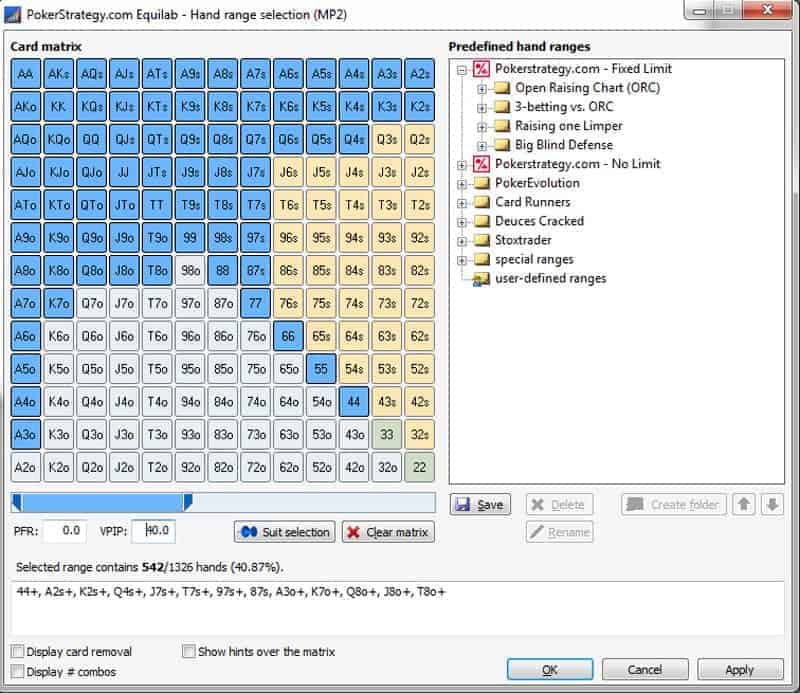
Of course, this is somewhat generic, and a particular player may prefer 96s over Q4s, for example, but you get an idea. This person is playing a wide range of hands, which means you can look to play bigger pots with them even with some non-premiums holdings.
If we look at the other extreme of someone with a VPIP of just 12, for example, their range looks something like this.
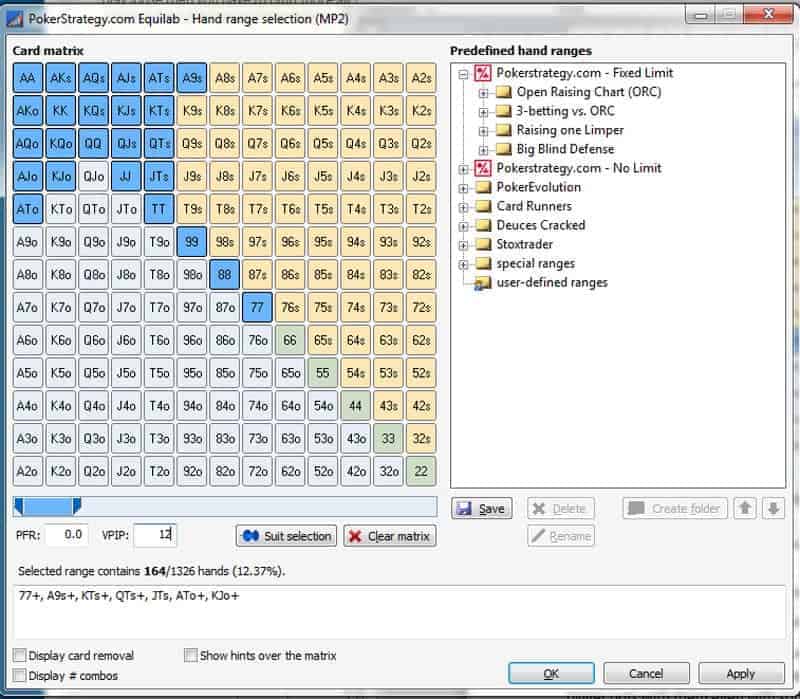
Against such a player, you don’t have any incentive to get involved unless you have a really big hand, or their postflop play is very weak. I won’t go into postflop play here, though, as it is a whole different topic.
VPIP and PFR poker stats translate into actual usable information and provide you with a very good idea of what kind of hands a player tends to play.
This info can help you not only in determining what to do before the flop but also later on in a hand as you’ll have a better understanding of how their range corresponds with different types of flops.
Examples of VPIP & PFR Combos and How to Read It
Although things are never static in poker and you’ll come across different types of players during your career, there are certain types you’ll encounter in regards to their PFR and VPIP poker stats.
I’ve divided them into several major categories to make it easier to figure out what exactly you’re dealing with when you see similar numbers.
-
Maniac (45/35)
A player who gets involved with close to half of the hands they’re dealt with and raises a majority of them is a real wild card.
Playing against them can be very profitable as they’ll be spewing chips left and right. However, be prepared to experience some variance as you’ll be forced to play big pots, and their range will be all over the place.
These players love to bluff, so let them dictate the action, and they will hand themselves most of the time.
-
Calling Station (40/10)
This player likes to see flops with a wide variety of hands, but they usually let others drive the aggression.
Their PFR poker stat of just 10% means they’re quite conservative when it comes to raising themselves and only do it with really good hands. Someone with this VPIP/PFR ratio is usually a good target to isolate because they’ll often play a fit or fold style.
-
Nits (15/11)
When you see this kind of PFR and VPIP ratio, you can be sure you’re dealing with an absolute nit.
These players don’t get involved often, but when they do, they do it with very strong hands and come in with a raise. Occasionally, they’ll call, but even their flat calls are stronger than most player’s raises.
Try not to give them too much action before the flop, but you can try and see flops against them with hands that have good potential to hit big. Also, do not shy away to run a postflop bluff against these players, because they will be folding whenever they miss.
If you want to learn more, you can read my full article about how to play poker against different players.
What Should You VPIP & PFR Be, Then?
By this point, you’re probably wondering what’s the correct ration you should be aiming for and what numbers you should be avoiding when you see them with other players.
As many of you probably know, a solid TAG (tight-aggressive) approach is still the best one to have, and you can recognize a solid TAG player by their VPIP and PFR poker stats.
Usually, they’ll have something like 25/20. Of course, there are variations of this number, as some players will have VPIP closer to 30 and PFR around 25.
It really depends on the game you are playing, so there isn’t any dead on number to follow, but the previously mentioned ratio of 25/20, or anything around it, is a good place to start.
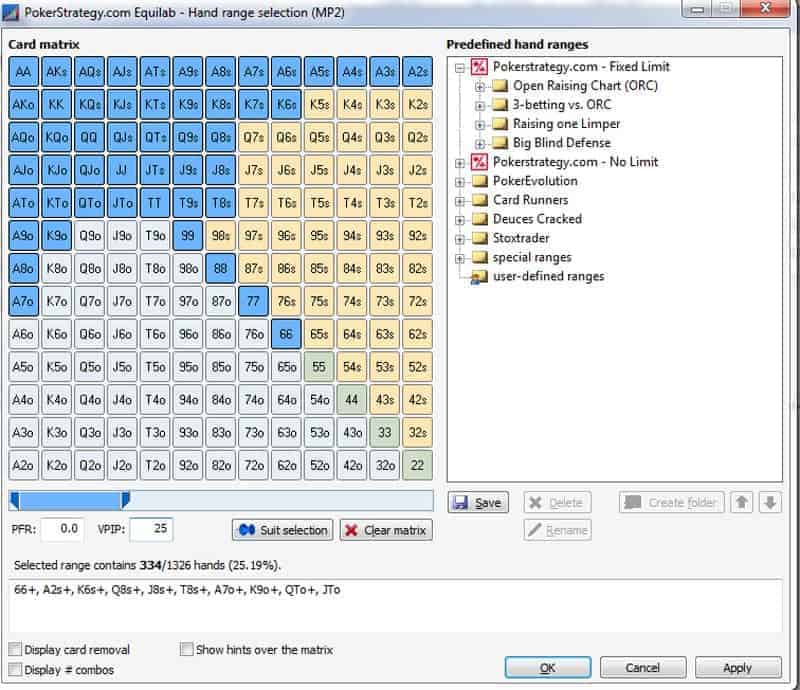
The picture shows what 25 VPIP looks like, so you can see that it contains mostly solid hands with some weaker ones thrown in for the balance.
It is important, however, not to be obsessed with these numbers. There is no single VPIP and PFR ratio that you have to have to be a winning player. A lot of it will depend on how tough the games you play in are and what the general population tendencies are.
For example, you can get away with a higher VPIP in some weaker games as people won’t attack dead money too much. In tight games with many nittier players, you can increase your PFR and significantly boost your win rate by stealing many pots uncontested.
Don’t Be Afraid of Poker Stats: Use VPIP and PFR to Your Advantage
I hope this article sheds some light on the whole topic of PFR and VPIP poker stats. Now that you know what they are and how they work, you can see that this isn’t some high math that’s only available to poker wizards.
You can and should start using these stats very early in your career or you’ll likely be at a disadvantage against most players you encounter.
With the information provided here and a bit of effort on your part when playing different poker hands, you’ll start seeing some real progress at the tables in no time, guaranteed!
Summary:
- VPIP & PFR are two fundamental poker stats
- VPIP tells you a lot about your opponents’ general ranges
- PFR poker stat is indicative of how aggressive they are
- PFR & VPIP combined can help you profile players
- Use these numbers to tailor your strategy at the tables











